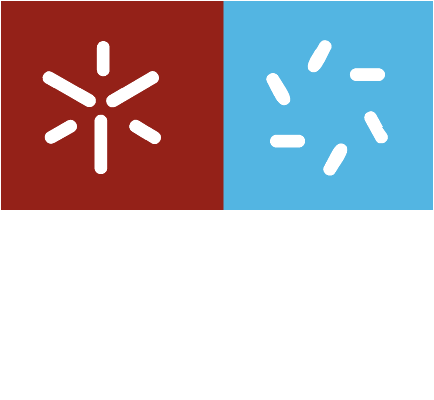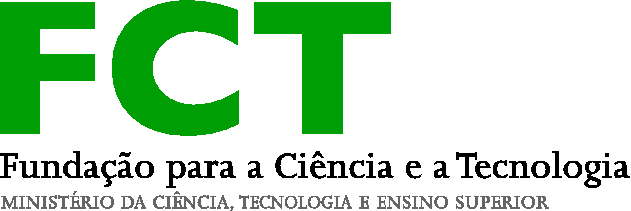Venue
The meeting will take place at University of Minho, Edifício 6 - Escola de Ciências, Auditório - Room 0.43 (School of Sciences Auditorium), Campus de Gualtar, Braga.
Schedule
The program of the CMAT's Open Day includes four plenary sessions, presented by external members to CMAT, and six thematic sessions, dedicated to the scientific activity developed in the research groups ALC, ANAP, GTA and SAPOR. Additionally, several posters authored by CMAT members will be exposed during the whole day at the main hall, next to the conference room.
Talks
Mouse over the titles shows the abstracts.
09:30 - 09:40 Opening Session
09:40 - 10:30 Samson Abramsky, Oxford University
Relating Structure and Power: a junction between categorical semantics, model theory and descriptive complexity
There is a remarkable divide in the field of logic in Computer Science,
between two distinct strands: one focussing on semantics and
compositionality ("Structure"), the other on expressiveness and
complexity ("Power"). It is remarkable because these two fundamental
aspects are studied using almost disjoint technical languages and
methods, by almost disjoint research communities. We believe that
bridging this divide is a major issue in Computer Science, and may hold
the key to fundamental advances in the field. In this talk, we describe
a novel approach to relating categorical semantics, which exemplifies
the first strand, to finite model theory, which exemplifies the second.
It is based on [1, 2], and ongoing joint work with Nihil Shah, Tom Paine
and Anuj Dawar.
[1] Samson Abramsky, Anuj Dawar, and Pengming Wang. The pebbling comonad
in finite model theory. In Logic in Computer Science (LICS), 2017 32nd
Annual ACM/IEEE Symposium on, pages 1-12. IEEE, 2017.
[2] Samson Abramsky and Nihil Shah. Relating Structure and Power:
Comonadic semantics for computational resources. In 27th EACSL Annual
Conference on Computer Science Logic, CSL 2018, September 4-7, 2018,
Birmingham, UK, pages 2:1-2:17, 2018.
10:30 - 11:00 Filipe Mena [CMAT-GTA]
Generalizations of Hawking-Penrose singularity theorems
We revise concepts and results of Differential Geometry in
order to describe some singularity theorems of General Relativity. We
then briefly describe new results which extend those theorems to affine
theories of gravity with torsion.
Coffee Break
11:30 - 11:50 Paulo Luz [CMAT-GTA]
Gauss-Codazzi-Ricci equations for Lorentzian manifolds with torsion
We generalize the Gauss, Codazzi-Mainardi and Ricci embedding equations for Lorentzian manifolds endowed with a metric compatible, affine conection. Provided necessary and sufficient conditions for the existence of hypersurface orthogonal congruences, we study how the presence of a general torsion tensor field affects the induced geometry of sub-manifolds embedded in a higher dimensional Lorentzian manifold, in particular its effects on the second fundamental form. We then generalize the Gauss-Codazzi-Ricci equations, relating the Riemann curvature tensors of the embedding manifold and the sub-manifold, showing how these are explicitly modified by the presence of the torsion tensor field.
11:50 - 12:20 Regina De Almeida [CMAT-ANAP]
On the growth behavior of entire solutions to higher dimensional polynomial Cauchy-Riemann equations
The growth behavior of entire solutions of polynomial Cauchy-Riemann equations in higher dimensional Euclidean spaces will be analyzed. Different kinds of growth orders for this set of solutions will be introduced. Furthermore, a generalization of the Lindelof-Pringsheim theorem will be presented. (Joint work with R.S. Krausshar)
12:20 - 13:10 Simões Pereira, Universidade de Coimbra
Some Elementary Mathematical Concepts as seen in Discrete Mathematics
We make a brief review of the basic concepts related to functions. In our traditional elementary courses, illustrative examples are presented thinking of functions whose domain and co-domain are the Euclidian straight line, that is, the set of the real numbers endowed with the Euclidian topology.
And we tell our students that continuity is the possibility of "drawing the image of the function without raising the pencil from the paper".
But how do we understand continuity, when the domain is a finite set of points? We may take the identity function, y=f(x)=x, defined on a finite set of points and see that even such a trivial function may be continuous or not. This depends, as is the case for any other function, on the topologies defined on their domain and their co-domain!
Since I mention topologies on finite sets of points, let me say that we should forgive their avoidance by many mathematicians as soon as we remember William P. Thurston who called finite topological spaces an oddball topic (see: Bulletin of the AMS 30-2 (1994), pg. 161-177.) In fact, R. P. Stong was a pioneer in the study of finite topological spaces (see: Transactions of the AMS 123 (1966), pg. 315- 340), but he had almost no followers.
Lunch
15:00 - 15:50 Kenier Castillo, Universidade de Coimbra
Markov theorem for weight functions on the unit circle
Over the years there were many extensions to the classical theory of orthogonal polynomials on the real line (OPRL). After the influential works by Delsarte and Genin and Jones et al. about the nowadays called paraorthogonal polynomials on the unit circle (POPUC)-in many senses the appropriate complex analog of OPRL-, this collection of polynomials and their zeros have received considerable attention from two disparate audiences, namely researchers in orthogonal polynomials and researchers in numerical linear algebra. As we will see during the talk, POPUC are close related with orthogonal polynomials on the unit circle (OPUC) and, therefore, with weight functions on the unit circle. But unfortunately the classical Markov theorem on variation of zeros can not deal with it. In this talk we discusses this question and investigates the extent to which Markov's theorem remains valid in the case of weight functions on the unit circle.
15:50 - 16:20 Graça Soares [CMAT-ALC]
Geometric properties of generalized field of values and related problems
The numerical range (field of values) of a matrix A and their generalizations has a long and distinguished history and currently various research groups conduct
an active research on this topic. One of the main reasons is because this subject is related and has applications to many different branches of pure and applied
science such as operator theory, functional analysis, Banach algebras, matrix norms, inequalities, numerical analysis, perturbation theory, matrix polynomials, systems
theory, quantum physics,.... In this talk, we present some geometrical properties as well as some open problems related with some generalizations/variations of this
set. Joint work with Rute Lemos.
Coffee Break
16:50 - 17:10 Weronika Wojtak [CMAT-ANAP]
Neural Field Model for Measuring and Reproducing Time Intervals
The continuous real-time motor interaction with our environment requires the capacity to measure and produce time intervals in a highly flexible manner. Recent neurophysiological evidence suggests that the neural computational principles supporting this capacity may be understood from a dynamical systems perspective: Inputs and initial conditions determine how a recurrent neural network evolves from a "resting state" to a state triggering the action. Here we test this hypothesis in a time measurement and time reproduction experiment using a model of a robust neural integrator based on the theoretical framework of dynamic neural fields. During measurement, the temporal accumulation of input leads to the evolution of a self-stabilized bump whose amplitude reflects elapsed time. During production, the stored information is used to reproduce on a trial-by-trial basis the time interval either by adjusting input strength or initial condition of the integrator. We discuss the impact of the results on our goal to endow autonomous robots with a human-like temporal cognition capacity for natural human-robot interactions. Joint work with Flora Ferreira, Estela Bicho and Wolfram Erlhagen.
17:10 - 17:40 Cecília Castro [CMAT-SAPOR]
Panel regression trees in forecasting macroeconomic indicators
In this talk, regression tree estimation procedures for longitudinal data will be discussed. An application of this methodology will be presented in obtaining forecasts for GDP, gross domestic product, in 25 regions of Portugal (NUTS III), based on 3 explanatory variables measured over 7 consecutive years. The results are compared with those resulting from the application of linear mixed effects models. Advantages and disadvantages of these methodologies will also be discussed. Joint work with Joana Simões and Pedro Campos.
17:40 - 18:30 Delfim F. M. Torres, Universidade de Aveiro & CIDMA
Exact Solution to a Dynamic SIR Model
We investigate an epidemic model based on Bailey's continuous differential system. In the continuous time domain, we extend the classical differential model to time-dependent coefficients
and present an alternative solution method to Gleissner's approach. If the coefficients are constant, both solution methods yield the same result. After a brief introduction to time
scales, we formulate the SIR (susceptible-infected-removed) model in the general time domain and derive its solution. In the discrete case, this provides the solution to a new discrete epidemic system.
The last part is dedicated to the analysis of the limiting behavior of susceptible, infected, and removed, which contains biological relevance.
Posters
Mouse over the titles shows poster abstracts.
Amorim, A.P., Moreira, C.
[CMAT - SAPOR]
Simulation Study under a Semi-parametric Model for Censored Gap Times
In this work we compare the Kaplan-Meier and the semi-parametric estimators for a censorship models. The observations are assumed to be generated under a semi-parametric random censorship, this mean that a random censorship model where the conditional expectation of censoring indicator given the observations belongs to a parametric family. The performance of the corresponding asymptotic confidence intervals was investigated through simulations.
Anwasia, B., Gonçalves, P., Soares, A.J.
[CMAT-ANAP], IST, [CMAT- ANAP]
From the kinetic theory formulation of reactive mixtures to Maxwell-Stefan equations
In this work, we consider a reactive gaseous mixture described in the frame of kinetic theory and study the reaction-diffusion limit of the kinetic equations. Under certain assumptions, we derive the reactive Maxwell-Stefan equations, that properly describe the diffusive behavior of the species in the reactive mixture.
Costa, M.F., Ramos, M.P., Ribeiro, C., Soares, A.J.
[CMAT - SAPOR, GTA, ANAP, ANAP]
Mathematical modelling of autoimmunity
In a recently published article, a consistent mathematical model of kinetic type (system of integro-differential equations), describing the immune system interactions in the context of autoimmune disease, is given.
In this work it is shown that the kinetic system has a unique positive solution and its asymptotic behaviour is studied. Some numerical simulations are performed in order to investigate the sensitivity of the model to some important parameters associated to the autoimmune disease. In ongoing work this model is extended by including an artificial inlet in the system which represents an external drug therapy, so as to describe the effect of immunotherapy in autoimmune diseases. Moreover, optimal treatment strategies are investigated by using optimal control theory. The poster gives an overview of both the published results and the ongoing project.
Teixeira, A.P., Pereira, A.I.
[CMAT - SAPOR], IPB
On the analysis of plantar temperature distribution of (non)diabetic individuals
Diabetes Mellitus is a chronic illness that affects many people. It is estimated that the global cost will increase from 1.3 trillion dollars in 2015 to between 2.1 and 2.5 trillion dollars in 2030 [2]. Thus, prevention and early diagnosis of diabetic foot in Diabetes Mellitus patients is a very pertinent and import subject of study. The use of infrared thermography has shown advantages in the early detection of ulcers in the plant of the foot [1]. In this work, an analysis on the use of optimization techniques to characterize the temperature variation of the plant of the foot of diabetic and non-diabetic individual is made; numerical results are presented and conclusions are drawn.
[1] Hernandez-Contreras, D., Peregrina-Barreto, H., Rangel-Magdaleno, J., Gonzalez-Bernal, J. A., Altamirano-Robles, L. (2017). A quantitative index for classification of plantar thermal changes in the diabetic foot. Infrared Physics and Technology, 81, 242-249.
[2] Riddle, M. C., Herman, W. H. (2018). The cost of diabetes care-an elephant in the room. Diabetes care, 41(5), 929-932.


